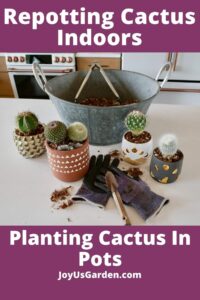Aloe vera, often heralded as a miracle plant, is not only prized for its remarkable medicinal properties but also for its striking appearance and ease of care. Growing an Aloe vera plant from a cutting is an engaging horticultural endeavor, allowing you to propagate this resilient succulent right from your own home. This guide will walk you through the detailed process of planting an Aloe vera from a cutting, ensuring that you have all the tools and knowledge necessary for successful propagation.
Before diving into the actual planting process, it’s important to understand what is involved in choosing the right cutting, preparing it properly, and ensuring a conducive environment for growth.
Understanding the Anatomy of Aloe Vera Cuttings
When propagating Aloe vera, the most suitable cuttings are typically leaf sections or offsets (also known as pups). These offsets are small plants that emerge at the base of the parent plant and can be removed for propagation. Each cutting should be at least a few inches long, with a healthy appearance free of blemishes or signs of rot.
Look for plump, firm leaves that have a vibrant green color. Avoid cuttings from a plant that appears stressed, as these may not root properly. Harvesting the cuttings should be done with clean, sharp tools to minimize the risk of injury to the plant and infection during the rooting process.
Preparing Your Setting: The Ideal Conditions for Rooting
To cultivate your Aloe vera cutting effectively, you need to establish an environment that promotes healthy root development. Start by selecting a well-draining potting mix, ideally one designed for cacti or succulents. This type of soil typically contains gritty materials that ensure excess water drains away, preventing rot.
To further improve drainage, consider adding perlite or coarse sand to your potting mix. The pot should have drainage holes to facilitate this process.
Additionally, select a pot that is shallow yet wide, as Aloe vera has a relatively shallow root system. Size matters; an overly large pot can retain more moisture than desired, adversely affecting the cutting’s ability to root successfully.
Steps for Planting Your Aloe Vera Cutting
Now that you have your cutting and potting mix ready, the next steps involve a bit of technique and patience.
1. Letting the Cutting Callous Over:
Before planting, it’s advisable to allow the cut end of your Aloe vera cutting to callous over. Place the cutting in a dry, shaded area for a few days until the cut surface forms a protective layer. This process significantly diminishes the risk of rot when it is planted into the soil.
2. Planting the Cutting:
Once the cutting has developed a callous, fill your pot halfway with the prepared potting mix. Create a small hole in the soil, ensuring it is deep enough to accommodate the cutting without bending it. Place the cutting upright into the hole, gently pressing the soil around it to stabilize the position. Ensure that only the cut end is buried, with the rest of the leaf or pup remaining above the soil line, as this prevents moisture retention on the plant.
3. Watering Wisely:
The moment of planting is crucial. For the first few days post-planting, refrain from watering the soil. Giving the cutting time to adjust to its new environment without the added stress of moisture allows it to establish a better root structure. After a week, mist the soil lightly to provide humidity, but remain cautious not to oversaturate. Allow the soil to dry out completely between watering sessions; this will help solidify the roots and encourage the development of new growth.
Caring for Your New Aloe Vera Cutting
Light is one of the most essential elements for your Aloe vera to flourish. Select a location where your cutting can receive indirect sunlight. Direct, harsh sun can scorch the delicate leaves and stunt growth. A bright windowsill is often ideal, but if the cutting begins to stretch toward the light, it may be a sign that it is not getting enough sun.
Monitoring temperature is also important. Aloe vera prefers a temperature range of approximately 60°F to 75°F. Sudden temperature fluctuations can adversely affect the plant’s development. During particularly chilly months, it may be necessary to bring the pot indoors to protect it from frost.
Fertilizing Your Aloe Vera Plant
As your Aloe vera cutting starts to establish roots and grow, it will benefit from periodic fertilization. Use a diluted succulent fertilizer during the growing season (spring and summer) every month to provide essential nutrients. Avoid over-fertilization, which can lead to salt buildup in the soil and harm the plant.
Conclusion: The Reward of Patience
Growing Aloe vera from a cutting can be a fulfilling and enriching experience. With the right care and conditions, your cutting will develop into a robust and thriving plant, offering not only aesthetic pleasure but also a host of practical applications. Patience is vital; like all gardening endeavors, the journey from cutting to a flourishing Aloe vera plant requires time and meticulous care. However, the rewards of nurturing a resilient succulent are undeniably gratifying. So, take delight in your newfound gardening skills and watch as your Aloe vera thrives and enhances your living space.





Leave a Comment